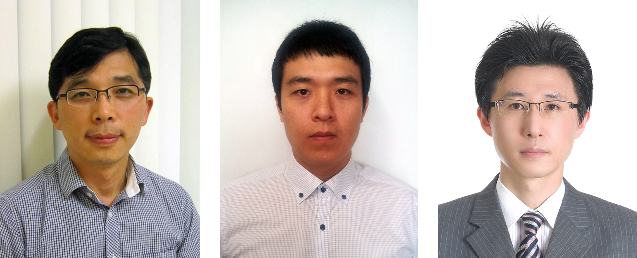Media Center
A multimedia mosaic of moments at GIST
GIST Excellence
[Press release] Professor Park Ji-Woong’s team develops a new method for improving organic solar cells
- 김슬혜
- REG_DATE : 2012.09.27
- HIT : 685
[Press release] Professor Park Ji-Woong’s team develops a new method for improving organic solar cells
Professor Park Ji-Woong’s GIST team develops a method for improving efficiency of organic solar cells
(Announced in ‘Advanced Materials’)
“Presents a chemical approach method which would increase electric charge movement in an irregular 3 dimensional interface”

Professor Park Ji-Woong’s team in the School of Materials Science and Engineering of Gwangju Institute of Science and Technology (GIST‧President, Kim Young-Joon)developed a new method of increasing efficiency of solar cells by inserting a very thin passivation layer along an interface formed irregularly between an electron donor and electron acceptor in an organic solar cell.
This research which was led by professor Park Ji-Woong of GIST(Han Min-Gu, Kim Hyeong-Su, in doctor’s course) and jointly conducted by professor Biwu Ma of US Lawrence Berkeley National Institute and professor Seo Hyeong-Tak of Ajou University received support from the Ministry of Education, Science and Technology (Minister: Lee Ju-Ho) and the middle-grade researcher support program(core basics, core joint) of National Research Foundation of Korea(President: Lee Seung- Jong). The thesis was posted on the online early view of the international scientific journal ‘Advanced Materials (IF=13.877)’, on 13th September, 2012. (Title of thesis: Photovoltaic Efficiency Enhancement by the Generation of Embedded Silica-Like Passivation Layer along the P3HT/PCBM Interface Using an Asymmetric Block-Copolymer Additive)
This research showed us that the irregular interface between an electron donor and electron acceptor inside the active layer which was not approachable by various methods for increasing efficiency of high molecular solar cells until now could be adjusted in a very simple method. The result was reduced loss of motion of electric charges inside the active layer unlike other methods intended to optimize the structure of the solar cells outside the existing active layer. Therefore, when applied together with existing methods, this new method is expected to maximize the efficiency increase of organic solar cells.
In addition, the method which Professor Park’s team developed is also expected to be applicable to high molecular solar cells which have structures different from those used in the thesis.